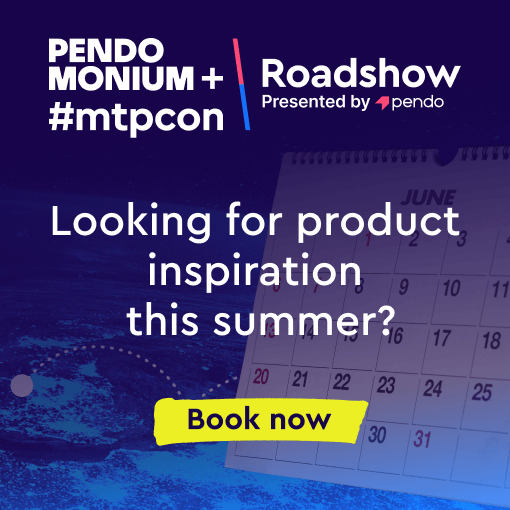Our team is building a product for just one person. Unbelievable! Who is this person?
His name is Eric.
Eric is a senior developer at a medium-sized software company. With a smooth career path and eight years of industry experience, Eric is considered a successful engineer. Eric loves coding and is passionate about new products. Radiohead is his favorite rock band.
This is a brief of the persona built for one of our products. I feel like I have known Eric for a long time and I can tell you a lot more about him. If I were a direct salesperson and now knocking at Eric’s door, I’d know how to sell the product to him.
This is the benefit of having a persona for a product.
What is a Product Persona?
A product persona is a fictional character created to represent a set of users that will react to your marketing mix (product, price, place, promotion) in a similar way. It helps your team by:
- Forming a specific, consistent understanding of your audience among your team
- Showing a human “face” to create empathy
- Providing an efficient shortcut for day-to-day conversation
How do you collectively build your marketing persona through a workshop?
Preparing for a Persona Workshop
Market research and having a customer proxy are prerequisites for a persona workshop. As a product manager, you’d usually take responsibility for these. You need to conduct quantitative market surveys or qualitative customer interviews in advance, fully digest the research and be ready to present the findings at the beginning of the workshop. During the session, you will be counted on as a customer proxy, the person who represents the customer’s best interests.
As well as product managers, stakeholders, marketing, sales, and dev representatives should attend a persona workshop. Try to keep your headcount below eight. You need to find a good facilitator, as it’s not a good idea to try to act as the customer proxy and facilitator at the same time.
A thorough persona workshop, including profile building and persona activating exercise, can take up to two days. If you want to just get the bare bones and hit the ground running, plan for at least four hours, including two hours of market-research sharing and two hours of workshop time to build the persona profile.
Building a Persona Profile Step-by-Step
The process looks a little like this:
- Separate people into small groups (2~4 per group)
- Explain the persona template
- Give each group 15 to 20 minutes to fill out the template
- Let groups present their personas
- Compare different personas, discuss patterns, resolve conflicts
- Let the whole group do it again and collectively build one persona
Sample Template
- Profile picture
- Name
- Age
- Role
- Company name
- Company size
- Company industry
- Previous working experience
- Education
- Relationship with other products/brands
- What’s your biggest failure in your previous job/project?
- Tell me about the last time you selected a tool for your team. What was the process?
Why it Works
This template has specific fields like title, age, industry. They force your groups to articulate the demographic info of your audience. We do this because demographic info is important in persona building.
Open questions like previous failures and relationships with other products encourage the group to build more context for this fictional character. By doing this, your groups will start to add psychographic clues into the profile.
“Last time” and “what if” questions are typical behavioral and situational questions. They are proved to be very effective in understanding and predicting behaviors in job interviews. In our context, it helps you predict the market reaction to your product and go-to-market strategy.
At last, doing this in groups through multiple iterations allows people to fully participate in this co-creation process. After this, everyone gets deeply connected to the character they created.
Pro Tips
If you have a hard time coming up with questions for your personal template, try using these behavioral interview questions for inspiration, but make sure you customize them to fit your context.
During group presentations, ask people to start their presentation with sentences like “I want to introduce my friend/colleague Eric to…”. Doing this helps to generate real empathy.
Be prepared to get conflicting answers. Let each group try to clarify any confusion or misunderstanding. If the results still diverge, it’s time to turn to the customer proxy in your group to seek validation.
Persona Activating Exercises
Now you have your persona profile. If time allows, I strongly recommend you do some persona activating exercises. They are designed to help your team develop a deeper understanding and empathy for your persona. The two most frequent exercises I use in my workshops are:
- Write lines
- Prioritization
“Writing lines” is about imagining that you are writing scripts for a TV show and the persona is the main character. Ask people to prepare some scenes and to write lines for the persona. Group those lines and discuss the themes. This exercise can reveal interesting psychographic insights.
Here is one example we got for Eric: When an e-commerce website loses his online order, Eric complains: “How could that be lost? It’s just a messaging queue.” This line goes to one of his psychographic themes called “ critical”.
Prioritization exercises help the group to understand the persona’s needs. A straightforward one we did for Eric is called “20/20 Vision”. We brainstormed Eric’s needs. Put the first one on the wall, then take the next one and ask: “Does Eric think it’s more or less important than the previous one”? Repeat this, and you will create a prioritized list. As the name of this exercise promises: we developed a 20/20 vision of Eric’s needs.
Post Workshop: put Your Product Persona to use
Once you’ve finished the workshop and got your persona’s profile, and feel that you have tons of things to say about them, what’s next? Here are a couple of places where you can use your persona right away:
1. Ingrain Your Persona Into day-to-day Discussions
Create a mock LinkedIn page for the persona, present it to your team and also put it up in your workspace. Encourage your team to start using the persona’s name in your day-to-day product discussion. For example, when your team is comparing two designs, ask questions like “Will [Eric] prefer to use version A or B?”
2. Reassess Your Product Roadmap
If you have done the prioritization exercises in your persona workshop, you will have a prioritized list of your persona’s needs. Compare these needs with the items on your product roadmap. Are they aligned?
3. Find Targeted People for a User Study
If you have not already been doing user studies, you’re in a better place to start, because you’re armed with a clearly defined profile for your customers. It will help you to find more people like them to interview or to participate in your usability testing.
4. Review Your Marketing Strategy
Do your marketing channels make sense to your personas? For example, if you’re spending effort sponsoring conferences, ask if those personas might attend these conferences? What kind of conferences do they like to go to? Review the messages on your website. Do they speak to your persona?
Summary
In summary, planning and facilitating a persona workshop takes some effort. You need to conduct research in advance, plan group activity to build a profile, and facilitate exercises to further understand your persona. But, after doing that, a well-defined and accepted product persona will benefit your team, your product and marketing strategy for a long time.







Comments 1